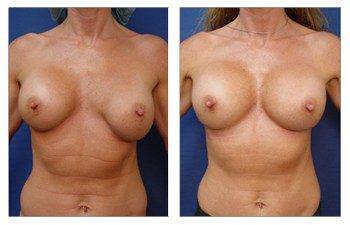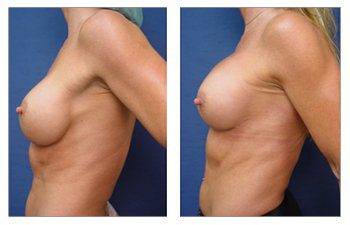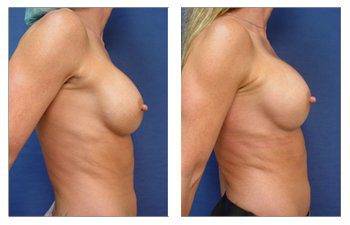



Download SurgiSculpt’s free Liposuction eBook
Breast augmentation revision surgery is coined to describe patients who have already undergone breast augmentation desire one of the multiple breast maneuvers including breast implant removal, breast implant removal, and replacement, capsule modification, breast pocket alteration, and/or breast lift.
Breast Augmentation Revision Surgery
Breast implants may require removal if the patient wishes to have larger breasts following initial augmentation. When you are younger and thinner, a particular implant size may be appropriate.
However, as you age and gain weight, your breasts may not appear as large as they once had. Interestingly, as patients get into their elder years, they often desire to downsize their implant size since they are tired of carrying the weight of the implants for decades.
Another set of the patient may desire to have implant explantation and no replacement of implants at all. This has become popularized by patients promoting breast implant illness syndrome.
The final reason patients may desire implant removal and replacement are due to implants that have ruptured or following the development of capsular contracture. Implant rupture can be diagnosed clinically in patients who have saline implants as their breasts will deflate much like a tire over a two week period.
The deflation time is dependent on the severity of the rupture. Silicone implant ruptures can be much more subtle initially. This is because even despite a rupture of the shell, the silicone jelly tends to be kept within the formed scar tissue around the implant called the capsule.
A large subset of silicone implant ruptures is diagnosed following the age of 40 when patients start to have annual or every other year mammograms. A ruptured implant is often detected on mammography and can be confirmed by MRI if mammography is unequivocal.
In breast augmentation revision surgery, capsular contracture refers to the development of a thickened capsule scar around the implants. The reason for the capsule thickening is multifold. There is an early capsular contracture caused by contaminants such as powder in the surgical glove, bacterial contamination, or bleeding into the breast pocket.
A more common cause of capsular contracture is microscopic oozing of the silicone jelly out of the implant shell which occurs over decades following micro-tears of the outer shell.
This type of oozing of the silicone molecules is termed bleeding, and will result in thickening of your breast implant scar, termed capsular contracture. To treat capsular contracture one of two maneuvers may be necessary including releasing the capsule, termed capsulotomy, or cutting out the capsule, termed capsulectomy.
If the implant position has become malpositioned, then breast augmentation revision surgery will be recommended. A malpositioned implant can be positioned too high, too low, or lateralized. When implant malposition has occurred, the breast pocket will have to be readjusted so that the implant is centered on the nipple and areola.
In order to reposition the breast implant pocket, the capsule that has already formed is utilized. This capsule can be incised, cut out, or modified by being sewn up, termed capsulorrhaphy.
This maneuver is very common during breast augmentation revision surgery, where major and even minor pocket adjustments are desired. The final patients who may desire breast augmentation revision surgery include patients who have had successful breast augmentation decades but have noticed sagging of their breasts due to the natural aging process.
These patients are typically happy with their implants but wish to have their breasts and nipples raised to a more youthful position so they opt to have the breast augmentation revision surgery. Since their implants are usually several decades old, these patients universally elect to have their implants replaced during their breast lift surgery.
Please see this 44-year-old female before and after her breast augmentation revision to correct her asymmetry.
